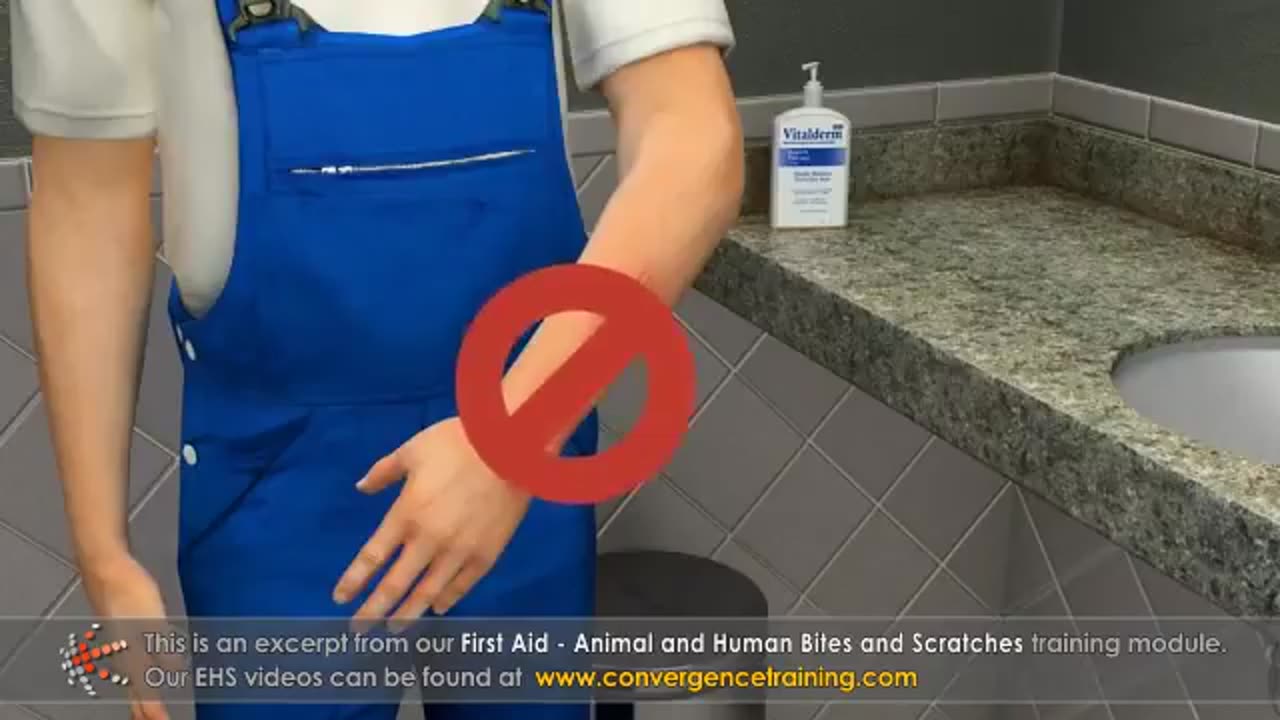Premium Only Content

First Aid - Animal and Human Bites and Scratches Training
**First Aid Training for Animal and Human Bites and Scratches** is essential to ensure prompt treatment and prevent complications such as infections, rabies, or tetanus. Here's an outline for an effective training program:
---
## **1. Introduction to Bite and Scratch Injuries**
- **Common Causes**:
- **Animal bites**: Dogs, cats, rodents, bats, or wildlife.
- **Human bites**: Intentional or accidental during physical interactions.
- **Scratches**: Often from animals, especially cats.
- **Potential Risks**:
- Infection (e.g., bacterial infections, rabies, or tetanus).
- Severe bleeding or tissue damage.
- Emotional trauma.
- **Statistics and Examples**:
- Highlight how untreated bites and scratches can escalate to serious complications.
---
## **2. Initial Assessment of the Injury**
- **Evaluate the Scene**:
- Ensure safety before assisting the victim (e.g., avoid contact with aggressive animals).
- Use personal protective equipment (PPE) if available.
- **Assess the Wound**:
- Type of wound: Puncture, tear, or scratch.
- Location: Head, neck, hands, or legs.
- Severity: Depth, bleeding, or signs of infection.
---
## **3. First Aid Steps for Animal Bites**
1. **Stop the Bleeding**:
- Apply firm pressure with a clean cloth or bandage.
2. **Clean the Wound**:
- Wash thoroughly with soap and running water for at least 5 minutes.
- Avoid scrubbing to prevent further tissue damage.
3. **Apply Antiseptic**:
- Use an antiseptic solution to disinfect the wound.
4. **Dress the Wound**:
- Cover with a sterile bandage or clean dressing.
5. **Seek Medical Attention**:
- If the bite is deep, the animal is unknown, or there is a risk of rabies.
---
## **4. First Aid Steps for Human Bites**
1. **Clean the Wound**:
- Wash thoroughly with soap and water.
- Apply an antiseptic to reduce the risk of infection.
2. **Control Bleeding**:
- Apply pressure if bleeding is present.
3. **Cover the Wound**:
- Use a sterile dressing.
4. **Medical Evaluation**:
- Human bites often have a higher risk of infection due to bacteria in saliva.
- Seek medical advice for antibiotics or further care.
---
## **5. First Aid Steps for Scratches**
1. **Clean the Area**:
- Wash the scratch with soap and water.
- Apply an antiseptic.
2. **Check for Debris**:
- Remove any dirt or foreign objects gently.
3. **Monitor for Infection**:
- Watch for redness, swelling, warmth, or pus.
4. **Seek Medical Advice**:
- For deep scratches, scratches from wild animals, or if symptoms of infection appear.
---
## **6. Infection Prevention**
- **Signs of Infection**:
- Redness, swelling, warmth, pain, or pus.
- Fever or chills.
- **When to Seek Medical Attention**:
- If the wound becomes infected.
- If the victim hasn’t had a tetanus shot within the last 5–10 years.
---
## **7. Special Concerns: Rabies and Tetanus**
- **Rabies**:
- Risk from bites or scratches of animals like bats, raccoons, or stray dogs.
- Seek immediate medical attention for post-exposure prophylaxis (PEP).
- **Tetanus**:
- Risk from deep puncture wounds.
- Ensure the victim’s tetanus vaccination is up-to-date.
---
## **8. Reporting and Documentation**
- **Animal Bites**:
- Report to local authorities, especially if the animal’s vaccination status is unknown.
- Observe the animal for rabies symptoms if possible.
- **Human Bites**:
- Document the incident for workplace or school records if applicable.
---
## **9. Prevention Strategies**
- **Animal Bites**:
- Avoid provoking animals or handling wild/stray animals.
- Teach children safe interaction with pets.
- **Human Bites**:
- De-escalate aggressive situations when possible.
- Use appropriate behavior management techniques.
- **Scratches**:
- Trim pets’ nails regularly.
- Wear gloves when handling aggressive animals.
---
## **10. Training Exercises**
- **Simulated Scenarios**:
- Practice cleaning and dressing bite wounds.
- Role-play communication with medical professionals.
- **First Aid Kit Familiarization**:
- Ensure participants know how to use antiseptics, bandages, and gloves.
---
### **Key Takeaways**
- **Clean wounds promptly** to reduce infection risk.
- **Seek medical advice** for bites or scratches from unknown animals.
- **Prevent future incidents** by practicing safe behaviors around humans and animals.
Would you like a printable checklist or detailed step-by-step visual materials to accompany this training?
-
 6:54
6:54
HSESafetyInformation
5 months ago6 Must Try Breakfast recipes By Food Fusion
351 -
 LIVE
LIVE
LFA TV
11 hours agoLFA TV ALL DAY STREAM - THURSDAY 7/31/25
5,982 watching -
 1:02:45
1:02:45
Game On!
17 hours ago $1.55 earnedFootball is BACK! NFL Hall of Fame Game 2025
17.3K1 -
 LIVE
LIVE
FusedAegisTV
22 hours ago3rd Party Partner Showcase Nintendo Direct! REACTION 7.31.2025 | FusedAegis Presents
102 watching -
 13:30
13:30
WhaddoYouMeme
17 hours ago $3.59 earnedIt All Makes Sense Now
20.5K22 -
 2:00:05
2:00:05
Nick Freitas
16 hours agoIs Conservatism Dead?
22.8K23 -
 LIVE
LIVE
PudgeTV
8 hours ago🟠 Gaming on Rumble | Frostpunk 2 - Completing Chapter 2
62 watching -
 22:07
22:07
Jasmin Laine
18 hours ago'You Think This Is NORMAL?!'—U.S. Official STUNS CTV With BRUTAL Mic Drop
13.4K39 -
 2:00:40
2:00:40
BEK TV
1 day agoTrent Loos in the Morning - 7/31/2025
10.6K -
 LIVE
LIVE
The Bubba Army
23 hours agoShannon Sharpe FIRED after Sex Lawsuit - Bubba the Love Sponge® Show | 7/31/25
1,438 watching